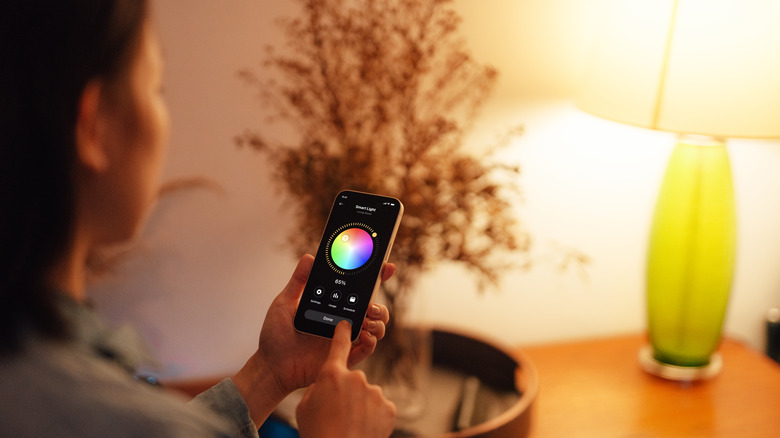We may receive a commission on purchases made from links.
The concept of smart home technology has gradually found its way into just about every conceivable facet of the average home. With the right devices, a smartphone or tablet, and a bit of know-how, you can bestow smart functionality on all kinds of appliances, fixtures, and incidentals around the house, whether for practical purposes or just for fun.
Advertisement
One prominent subset of smart home technology is smart lighting. A smart lighting system, available from a variety of brands, allows you to take more direct control over your home’s illumination, carefully tweaking the levels of light produced as well as monitoring your fixtures’ passive electricity consumption. If you’re looking to integrate smart lighting into your smart home setup, there are two primary ways to do it: Smart light bulbs and smart light switches. While both of these devices have the same general purpose of making your home lighting smarter, they go about it in slightly different ways that may affect your usage. More importantly, how you use either could also have a tangible effect on your bills.
Advertisement
Smart bulbs are a good way to add simple or temporary smart lighting
A smart light bulb is, simply put, a light bulb that has had a smart tech device integrated into it. Usually, this takes the form of a small plastic device located between the contact and the actual glass bulb. When a smart bulb is plugged into a lighting socket, you can take direct control of the light it produces using your smartphone or a smart home speaker. You can power on the light remotely, control how bright or dim it is, and in some cases, even produce cool effects like colored lighting.
Advertisement
Since a smart bulb is a standalone device, it’s a good choice for quick lighting installations. There’s no setup required beyond sticking the bulb into a fixture and pairing it to your phone. If you rent your home or apartment and don’t have access to your physical electrical grid, a smart bulb can give you smart home-level control without any invasive installations. Just remember that if you want every fixture in your home to have this functionality, they’ll all need their own smart bulbs, and each one needs to be paired individually. The Amazon Basics Smart Bulb costs $13 per bulb, while the Govee LED Smart Bulb costs $16, though purchasing them in packs can save you money.
It’s also worth noting that, like a regular light bulb, a smart bulb will eventually burn out. Granted, smart bulbs are often more energy-efficient than regular bulbs, so that burn out won’t happen for a long time, possibly years depending on your usage. If and when it does happen, though, the entire bulb will be rendered useless and will need to be replaced.
Advertisement
Smart switches are more permanent smart lighting options
A smart switch is a smart tech device that’s designed to take the place of a traditional light switch, the same kind you have on your wall. Much like a normal switch, a smart switch can stop or start the flow of electricity to a connected appliance via its physical buttons. What differentiates it is that this control can also be handled remotely via a paired smartphone or smart speaker. Using your connected device, you can remotely control any lighting fixtures that are paired to the switch. This control includes the usual on and off, as well as dimming and timer functions. You can also monitor the flow of power to all connected fixtures and devices, which can be handy if you’re trying to be cost-conscious about energy usage.
Advertisement
The big asterisk that comes with smart switches is that you can’t just stick them where you want them like you would with a smart bulb. As it’s a full light switch, it needs to be wired directly into your home power grid. This means that unless you own your home, the whole prospect is usually a non-starter. Even then, if you aren’t already well-versed in electrical work yourself, you’re going to need to hire an electrician to handle it, which can cost upwards of $200, according to Fixr. Once the switch is installed, though, that’s pretty much the end of costs. You can use it to control any connected fixtures, and if the bulbs in those fixtures burn out, you can just replace them with another regular bulb without needing to pair everything again.
Advertisement


